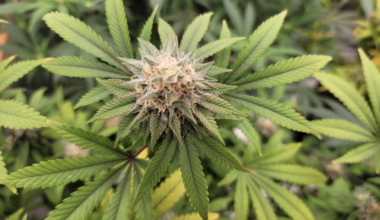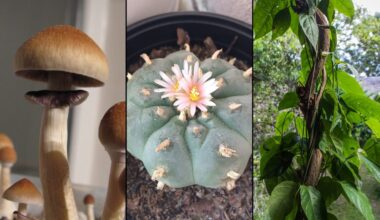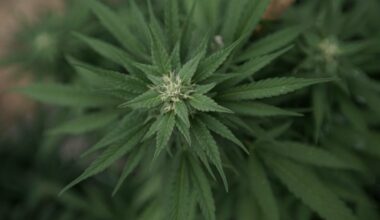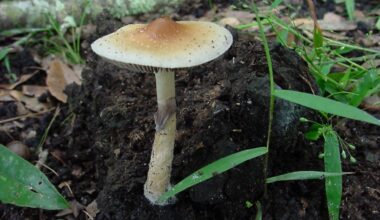Senate Democrats have released a massive package of spending bills and related reports for the 2023 Fiscal Year, including numerous provisions that deal with issues such as state-level medical marijuana protections, psychedelics research and U.S. Department of Veterans Affairs (VA) cannabis policy.
The newly unveiled legislation from Senate Appropriations Committee Chairman Patrick Leahy (D-VT) contains many familiar drug policy sections, some of which overlap with spending measures that were approved in the House this month. Both chambers have also notably excluded an existing rider that has blocked Washington, D.C. from implementing a system of legal marijuana sales—a decision that’s already drawn the ire of Senate Republicans.
And while the House has previously addressed psychedelic issues through the appropriations process, this marks the first time that the Senate has included report language that urges federal agencies to promote research into the therapeutic potential of substances like psilocybin.
Advocates hoped that the Senate would insert language in the base bill that would provide broad protections for all state and U.S. territory cannabis programs, but as introduced, the legislation only maintains a longstanding rider preventing the use of Justice Department funds to interfere in medical cannabis programs.
Of course, it’s still possible that the Senate could adopt the more holistic language as an amendment down the line, as the House did again this year. But Republican appropriators have already signaled that they will put up a fight over modest cannabis reforms such as the exclusion of the D.C. marijuana rider.
Senate Appropriations Committee Vice Chairman Richard Shelby (R-AL) voiced opposition to the removal of “legacy riders” in a statement on Thursday, for example, specifically complaining that the legislation “clears the way for marijuana legalization in Washington, D.C., and allows federal funds to be used to finance needle exchange programs in the nation’s capital without restriction.”
The newly released documents have not yet been approved by the Appropriations Committee, and at this point represent a starting point for further negotiations as proposed by the chairman. It remains to be seen to what extent the panel will go through a full markup process for each individual spending bill ahead of the end of the fiscal year on September 30.
Here’s a breakdown of the drug policy provisions of the Senate Appropriations Committee spending bills and reports:
Medical marijuana programs in states and U.S. territories would continue to be protected from Justice Department interference under a rider for the Commerce, Justice, Science, and Related Agencies (CJS) spending bill that’s been annually renewed each year since 2014.
“SEC. 531. None of the funds made available under this Act to the Department of Justice may be used, with respect to any of the States of Alabama, Alaska, Arizona, Arkansas, California, Colorado, Connecticut, Delaware, Florida, Georgia, Hawaii, Illinois, Indiana, Iowa, Kentucky, Louisiana, Maine, Maryland, Massachusetts, Michigan, Minnesota, Mississippi, Missouri, Montana, Nevada, New Hampshire, New Jersey, New Mexico, New York, North Carolina, North Dakota, Ohio, Oklahoma, Oregon, Pennsylvania, Rhode Island, South Carolina, South Dakota, Tennessee, Texas, Utah, Vermont, Virginia, Washington, West Virginia, Wisconsin, and Wyoming, or with respect to the District of Columbia, the Commonwealth of the Northern Mariana Islands, the United States Virgin Islands, Guam, or Puerto Rico, to prevent any of them from implementing their own laws that authorize the use, distribution, possession, or cultivation of medical marijuana.”
A summary of the CJS spending legislation from the committee majority touts the provision, though it’s mischaracterized.
“This bill again contains language preventing the Justice Department from interfering with states that have medical marijuana laws, ensuring that the prescribing and dispensing of medical marijuana in those states is both legal and regulated,” the summary states. (The rider doesn’t ensure that the programs are legal or regulated; it simply restricts the use of DOJ funds to enforce the ongoing federal prohibition that in fact continues to remain on the books.)
“Patients and doctors in states that have approved medical marijuana need to know that they are safe from arrest and prosecution by the Federal government,” the summary says.
One of the more novel sections of the appropriations legislation addresses psychedelics research, with the committee urging federal health agencies to keep funding studies that look into the medical value of substances like psilocybin.
“Psychedelic Research.—The Committee encourages NIH to continue research funding for psychedelic medicines development and encourage psychedelic research at the NIH Clinical Center. The Committee also encourages NIH to continue to work with FDA in developing and supporting public private collaborations, including academic researchers and medicine developers, to advance all forms of psychedelic research for therapeutic purposes.”
Another new section addresses VA cannabis policy, with the committee expressing “concerns” about the department interfering in veterans’ medical marijuana access, including by preventing VA doctors from issuing cannabis recommendations to patients.
“Medical Cannabis.—The Committee has concerns with any effort by VA to interfere with the ability of a veteran to participate in a medicinal marijuana program approved by a State, deny any services from the Department to a veteran who is participating in such a program, and limit or interfere with the ability of a healthcare provider of the Department to make appropriate recommendations, fill out forms, or take steps to comply with such a program.”
As noted, the appropriations legislation omits what’s known as the “Harris rider,” after Rep. Andy Harris (R-MD), that has blocked D.C. from using its local dollars to allow commercial cannabis sales even though voters approved adult-use legalization in 2014.
Sen. Chris Van Hollen (D-MD), chair of the Appropriations Financial Services and General Government (FSGG) Subcommittee, highlighted that decision, saying that the bill “will increase transparency in political fundraising, strengthen our election security, remove harmful legacy riders that unfairly restrict the District of Columbia’s ability to fund reproductive services and regulate cannabis, and much more.”
While it remains to be seen whether that provision will stay out of the final package that’s delivered to the president’s desk, the mayor of D.C. did recently sign a bill that allows people to self-certify as medical cannabis patients in the District, effectively circumventing the congressional barrier. Also, for what it’s worth, President Joe Biden’s past two budget requests have maintained the Harris rider despite broad Democratic opposition.
There are several research-focused report sections dealing with marijuana. Appropriators directed federal agencies to take steps to support studies into the Schedule I substances and emphasized their ongoing concerns about research barriers under federal prohibition.
“Marijuana Research.—The Committee is concerned that marijuana policies on the Federal level and in the States (medical marijuana, recreational use, etc.) are being changed without the benefit of scientific research to help guide those decisions. NIH is encouraged to continue supporting a full range of research on the health effects of marijuana and its components, including research, to understand how marijuana policies affect public health.”
…
“Cannabis Research.—Although concrete steps have been taken towards ameliorating the regulatory and supply issues hampering cannabis research in the U.S., funding levels have not kept pace with widespread use of cannabis and substantial clinical interest in the field. Cannabis is fully legal in 18 States and the District of Columbia, effectively so in 20 others that permit some form of medical marijuana, and consumed by nearly half of American teens and adults at some time in their lives, yet there is surprisingly little information about its effects on body chemistry and cognition. Meanwhile, limited data exists on the clinical efficacy of cannabis despite this use. The Committee encourages NIH to continue to fund cannabis research, with an emphasis on medical cannabis therapeutic development for patients. The Committee encourages NIH to expand its current research agenda across its institutes, including additional research on higher potency THC, alternative cannabis formulations and extracts, and additional minor cannabinoids. The Committee also encourages NIH to continue to conduct research on the potential medical uses of cannabis, such as chronic pain, appetite stimulation, immune diseases, cancer, metabolic and digestive disorders, epilepsy, glaucoma, multiple sclerosis, sleep disorders, and a variety of mental health conditions such as anxiety and PTSD. In addition, the Committee recognizes the benefits of cross-institute collaboration in the HEAL Initiative. Therefore, the Committee urges NIH to take an integrated approach to cannabis research, including by forming a cross-institute research group.”
…
Barriers to Research.—The Committee is concerned that restrictions associated with Schedule I of the Controlled Substance Act effectively limits the amount and type of research that can be conducted on certain Schedule I drugs, especially opioids, marijuana or its component chemicals, and new synthetic drugs and analogs. At a time when we need as much information as possible about these drugs, including research on their therapeutic potential and on overdose reversal agents, we should be lowering regulatory and other barriers to conducting this research. The Committee appreciates NIDA’s completion of a report on the barriers to research that result from the classification of drugs and compounds as Schedule I substances, including the challenges researchers face as a result of limited access to sources of marijuana including dispensary products.
The spending report for the U.S. Department of Health and Human Service (HHS) also talks about exploring alternatives to opioids, which appropriators say should include studies into the therapeutic potential of kratom, a plant associated with pain-relieving qualities.
“Combating Opioid Overdoses.—According to CDC, there were more than 107,000 drug overdose deaths during the 12-month period ending in January 2022. The Committee notes and commends NIDA for its funding of research to examine the potential for kratom to reduce opioid use among people with opioid use disorder, given kratom’s reduced addiction and overdose liability as compared to opioids.”
The House spending legislation also tackles the issue of kratom research.
The new Senate proposals also contain ample report language on hemp and its derivatives like CBD, including a mandate that the Food and Drug Administration (FDA) implement enforcement discretion guidance for the marketing of the legal cannabinoid as the agency continues to look into rulemaking.
“Cannabis and Cannabis Derivatives.—The Committee notes that budget did not request additional resources for Cannabis and Cannabis Derivatives activities, and therefore directs the FDA to maintain funding levels to support regulatory activities, including developing policy, and for the FDA to continue to perform its existing regulatory responsibilities, including review of product applications, inspections, enforcement, and targeted research for cannabis-derived substances, such as cannabidiol [CBD]. Within 90 days of enactment of this Act, the FDA shall issue a policy of enforcement discretion with regard to certain products containing CBD meeting the definition of hemp as defined by section 297A of the Agricultural Marketing Act of 1964 (7 U.S.C. 1639). Such enforcement discretion shall be in effect until the FDA establishes a process for stakeholders to notify the FDA of use of CBD in products that include safety studies for intended use per product and 112 makes a determination about such product. In addition, the FDA is encouraged to consider existing and ongoing medical research related to CBD that is being undertaken pursuant to an Investigational New Drug application in the development of a regulatory pathway for CBD in products under the jurisdiction of the FDA and to ensure that any future regulatory activity does not discourage the development of new drugs. The Committee also encourages the FDA to partner with an academic institution to expand sampling studies of CBD products currently on the market.”
The CJS bill, as well as appropriations legislation for the U.S. Department of Agriculture (USDA), contains longstanding provisions to safeguard state hemp programs from interference.
“SEC. 530. None of the funds made available by this Act may be used in contravention of section 7606 (‘Legitimacy of Industrial Hemp Research’) of the Agricultural Act of 2014 (Public Law 113–79) by the Department of Justice or the Drug Enforcement Administration.”
…
“SEC. 741. None of the funds made available by this Act or any other Act may be used—
(1) in contravention of section 7606 of the Agricultural Act of 2014 (7 U.S.C. 5940), subtitle G of the Agricultural Marketing Act of 1946, or section 10114 of the Agriculture Improvement Act of 2018; or
(2) to prohibit the transportation, processing, sale, or use of hemp, or seeds of such plant, that is grown or cultivated in accordance with section 7606 of the Agricultural Act of 2014 or subtitle G of the Agricultural Marketing Act of 1946, within or outside the State in which the hemp is grown or cultivated.”
The draft also says the committee is concerned about existing regulations for the federally legal crop such as an “arbitrary” THC limit and limited industry access to certain USDA grant and insurance programs. It also encouraged DEA to continue developing field testing technology to help law enforcement distinguish hemp from marijuana.
“Hemp.—The Committee is concerned that the level of allowable THC content in hemp may be arbitrary and pose a burden on hemp producers that is not supported by scientific evidence. The Committee directs USDA to work with the Department of Health and Human Services and the Drug Enforcement Administration to study and report to Congress on whether there is scientific basis for the current limit of 0.3 percent THC in hemp and suggest alternative levels if necessary.
The Committee is concerned that producers of high value, horticultural hemp are being prevented from accessing USDA programs designed for specialty crops, including the Specialty Crop Block Grants and crop insurance. Within 90 days of enactment of this Act, the Committee directs the Secretary to establish a dual designation for hemp as a specialty crop based on the manner and purpose for which it is grown.”
…
“Hemp Testing Technology.—The Agriculture Improvement Act of 2018 (Public Law 115–334) removed hemp and its derivatives from the Controlled Substances Act (Public Law 91–513, as amended), and authorized the production, consumption, and sale of hemp and hemp-derived products in the United States. The Act requires random testing to ensure hemp meets the definition under the law of having a delta-9 tetrahydrocannabinol [THC] concentration of less than 0.3 percent. The Committee is aware that DEA has developed field testing kits that can distinguish between hemp and marijuana on-the-spot. The Committee directs the DEA to continue to work to ensure State and local law enforcement have access to this field test technology so they can more efficiently conduct their drug interdiction efforts at the local level. The Committee further directs the DEA to report back to the Committee not later than 180 days after enactment of this act, and not less than every 6 months thereafter, until such time as testing kits are deployed to State and local law enforcement in the field.”
There’s also language directing USDA to explore hemp as a sustainable alternative to plastics, similar to language that’s included in the House version.
“Plastic Alternative.—The Committee recognizes the need for biobased and U.S.-grown alternatives. The Committee directs the department to explore U.S.-based hemp as a robust and dependable plastic alternative and issue a report to the Committee on how to best facilitate its cost-efficient use in government-produced or funded materials within 180 days of the passage of this act.”
There are additional USDA-specific sections that deal with hemp biotechnology and genomics research, as well as a mandate for the department to create a hemp germplasm repository at the Plant Genetics Resources Research Unit in New York.
“Hemp Cultivar Development.—The Committee encourages ARS to conduct biotechnology and genomics research in collaboration with capable institutions to elucidate the genetic control of key production and product quality traits in hemp to facilitate cultivar development. In addition, the Committee provides no less than the fiscal year 2022 level for ARS to partner with institutions already engaged in such research to conduct hemp genetic improvement research and breeding with new breeding and editing techniques.”
…
“Hemp Germplasm.—The Committee recognizes the increasing demand for hemp for a variety of uses and its growing importance as a crop for U.S. farmers. When the Nation’s hemp germplasm was destroyed in the 1980s, researchers lost access to publicly available germplasm for plant breeding purposes. The Committee directs ARS to establish and maintain a hemp germplasm repository at the Plant Genetics Resources Research Unit and provides no less than the fiscal year 2022 level for this purpose. The Committee also encourages ARS and the Plant Genetics Resources Research Unit to partner with 1890 institutions that have existing institutional capacity on hemp germplasm research, education, and extension capabilities.”
Senate appropriators also talked about the “emerging market” for various hemp-based products and said that USDA should pursue research and development to help integrate cannabis into “existing cropping, processing, and marketing systems.” The report also discourages the department from imposing new user fees on domestic hemp production and directs it to help provide additional guaranteed loans for industry stakeholders.
Hemp Production Systems.—The Committee recognizes the emerging market potential for U.S. hemp and hemp-based products for a variety of uses. The Committee directs ARS to conduct regionally-driven research, development, and stakeholder engagement to improve agronomic and agro-economic understanding of effectively integrating hemp into existing agricultural cropping, processing, and marketing systems. The Committee provides no less than the fiscal year 2022 level for this purpose. Research, engagement, and technology transfer shall be conducted in strict accordance with all applicable Federal and State authorities and regulations.
…
Proposed User Fees.—The Committee continues to reject past proposals to administratively implement new user fees to cover the government’s full cost for providing services to certain beneficiaries, including licenses for…domestic hemp production…. The Committee strongly believes that USDA should not propose new user fees without taking into account the full impact on farmers, ranchers, and beneficiaries who would be forced to contend with rapid changes in these programs and additional burdensome costs without prior notice.
…
Hemp-Based Products.—The Committee recognizes the growing interest for U.S. hemp and hemp-based products for a variety of uses and directs FCA to work with the institutions under its jurisdiction to provide access to guaranteed loans for hemp producers and businesses.
The spending bill covering the Departments of Labor, Health and Human Services and Education maintains language that advocates say unnecessarily inhibits research into controlled substances like cannabis and psilocybin. On the House side, Rep. Alexandria Ocasio-Cortez (D-NY) previously tried to remove it through an amendment, but it twice failed in floor votes.
“SEC. 507. (a) None of the funds made available in this Act may be used for any activity that promotes the legalization of any drug or other substance included in schedule I of the schedules of controlled substances established under section 202 of the Controlled Substances Act except for normal and recognized executive-congressional communications.
(b) The limitation in subsection (a) shall not apply when there is significant medical evidence of a therapeutic advantage to the use of such drug or other substance or that federally sponsored clinical trials are being conducted to determine therapeutic advantage.”
Finally, the legislation also proposes to change the names of certain federal agencies to remove stigmatizing language around drug use. For example, the committee is recommending to remove the word “abuse” from agencies like the Substance Abuse and Mental Health Services Administration (SAMHSA), simply swapping that word with “use.” The National Institute on Drug Abuse would also be renamed to National Institute on Drugs and Addiction, for example.
While the path forward for all these drug policy provisions—particularly those that Republican leadership have already identified as controversial from their end—is uncertain, their inclusion in the base bill is a promising sign to advocates and researchers. And when bicameral negotiations begin, it’s important that there’s already overlap with the House on many of the provisions.
The House-passed appropriations legislation is similarly wide-ranging, touching on topics like cannabis research barriers, impaired driving and preventing use by youth and pregnant people. There’s also language on preventing the Department of Education from penalizing universities simply because the institutions are conducting research into marijuana.
Additional sections of the House spending package cover protections for immigrants who use cannabis, freeing up marijuana-related advertising and providing the industry with access to the banking system.
Bipartisan ‘DANK Cannabis Research’ Bill Filed In Congress (Really)
Image element courtesy of Tim Evanson.
Medical Disclaimer:
The information provided in these blog posts is intended for general informational and educational purposes only. It is not a substitute for professional medical advice, diagnosis, or treatment. Always seek the advice of your physician or other qualified healthcare provider with any questions you may have regarding a medical condition. The use of any information provided in these blog posts is solely at your own risk. The authors and the website do not recommend or endorse any specific products, treatments, or procedures mentioned. Reliance on any information in these blog posts is solely at your own discretion.







